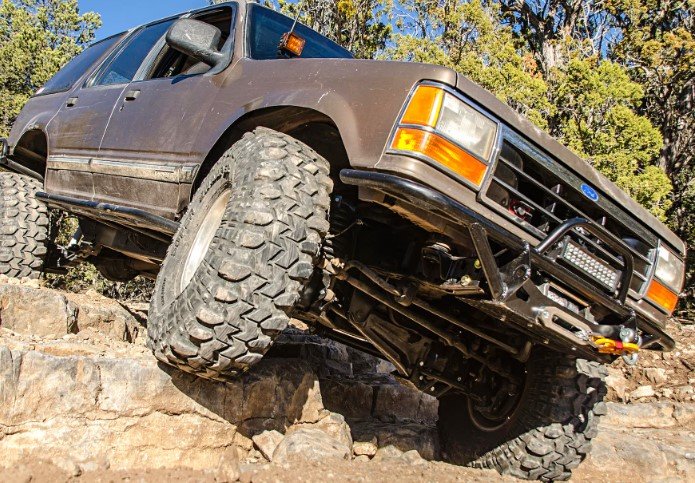Installation of the wrong axle in the vehicle may cause severe issues in the car’s performance. So, you should install a familiar and appropriate axle in your vehicle. Nowadays, Dana 30 and 35 are popular among car enthusiasts.
But first, let’s see the Dana 30 vs. 35 comparisons. Though the Dana 30 is more costly, it will provide more durable, reliable, and stronger axle quality than the latter. But, the Dana 35 is easier to replace and comes with a more excellent gear ratio than the Dana 30.
In this article, we will discuss the differences between these two-axle models and will compare them. Ultimately, you will learn which axle is better and which one to choose. Thus, keep reading.
Table: Comparison Between Dana 30 Vs 35
Let’s see several key differences between the Dana 30 and 35 axle models:
| Parameters | Dana 30 | Dana 35 |
| Position | Front axle | Rear axle |
| Strength | Strong and solid | Weak and flexible |
| Price | $3,895-$4,477 | $3,000-$3,200 |
| C-clip | No c-clips | Has c-clip |
| Replacement | Difficult to replace | Easily replaceable |
| Capacity For Larger Tire | It can run with larger tire | Weak for larger tires |
| Off-road performance | Good performance | Poor performance |
| Gear ratio | 3.21 or 3.73 | 3.21 or 4.10 |
An In-depth Comparison Between Dana 30 Vs 35 Axles
In the above table, we tried to show the key differences between the Dana 30 and 35 axles. For your better understanding, in this section, we will compare them in detail:
Position
Dana 30 is generally a front axle, and Dana 35 is a rear axle. While driving, the front axle remains full-floating while the rear one remains semi-floating.
That means the rear axle will go through more stress and abuse when you drive the vehicle. That’s why the risk of damage and bending of the rear one is more.
Strength
Dana 30 is stronger and acts solid than the Dana 35 axles. Generally, both of them have a GAWR of 2770 lbs. But, the front axle goes through less stress than the rear one.
Also, this front axle model is quite flexible. That’s why the rear one will act weaker and more prone to bending than the front one.
Price
The price of both axle models may vary due to car models and gear ratio. Generally, buying a Jeep Wrangler Dana 30 3.21 ratio front axle assembly, you may need to spend around $3,895-$4,477.
On the other hand, a Jeep Wrangler Dana 35 of 3.21 ratio rear axle assembly will cost approximately $3,000-$3,200. You can also buy second-hand axle assembly within a lower price range. Generally, a second-hand version of these axle models will cost around $600-$1,500.
C-clip
In Dana 35, the primary function of a c-clip is to hold the axles in place. People consider it as the weakness of an axle because the axle will come out with any breakage in the shaft.
The Dana 30 axle doesn’t need any C-clip. The reason is here the shaft is secure between the outer axle shaft and carrier cross pin. So, the front axle model will have no prime weak point.
Ease of Replacement
The replacement is easier for any Dana 35 rear axle because it features a suitable bolt-in replacement.
But, in the case of the front axle model, it isn’t easy to find a proper bolt for the replacement. Also, it’s tricky to find a replacement bolt that is strong enough.
Capacity For Larger Tire
You can try running your vehicle with a larger tire of 33s in the Dana 30 front axle model. According to manufacturers, it will perform excellently if the tire size remains under 36″.
But, in the case of the rear axle model Dana 35, a running car with 33s tires may snap any axle shaft. Manufacturers also say larger tires than 33s will cause this rear axle shaft to be bent.
Off-road Performance
The Dana 30 can bear these harsh driving conditions. Therefore, it will give you acceptable performance during off-road driving. But, with the rear axle model, you will face poor performance while driving off-road.

Gear Ratio
Generally, you will find the Dana 30 front axle with a 3.21 or 3.73 gear ratio and the Dana 35 with a gear ratio of 3.21 or 4.1. The higher the gear ratio, the more acceleration or torque you will get. That means you will get more torque and acceleration from the Dana 35-gear ratio of 4.10.
Dana 30 Vs. 35: Which One Is Better?
Generally, which is the better axle, will ultimately depend on your perspectives and preferences. On a low budget, Dana 35 is a better choice for higher torque and is an easily replaceable option.
But if you are looking for a robust and durable axle option, we suggest choosing Dana 30. It is also suitable for harsh off-road driving conditions.
You should remember that you can’t use these two-axle models, rear and front, interchangeably.
For the front position, the Dana 35 is significantly weak. If you don’t face any issues after using this axle in the front, it’s just your luck. But you shouldn’t depend on luck while choosing axles for a car.
Moreover, Dana 30 has smaller ring gear than Dana 35. So, for using the former one as a rear axle, you will need additional parts like new perches, axle tubes, suitable ring pinion, etc. This will be both costly and troublesome.
FAQs
In this FAQs section, we will answer several frequent questions about Dana’s 30 and 35 axles.
Is It Worthy To Eliminate C-clip From Dana 35?
Eliminating the c-clip won’t be cost-worthy. Because within the similar cost, you can easily swap into a C8.25, which is more reliable.
Does The Dana 30 And 35 Look Similar?
No. The cover of Dana 30 and 35 axles looks similar to a rounded square and oval, respectively. The diameter of the ring gear will be 7.125 inches for the former and 7.5625 inches for the latter.
Conclusion
Dana 30 is generally for the front axle, and Dana 35 is for the rear axle. Unfortunately, you don’t have any choice but to use them interchangeably. If you follow the Dana 30 vs. 35 comparisons, you will understand why so.
Generally, the former axle is stronger and more durable than the latter. Though you can use this axle as a rear position, it will require additional costs. Contrarily, as a weaker, flexible axle, the Dana 35 is completely unsuitable for the front position.
